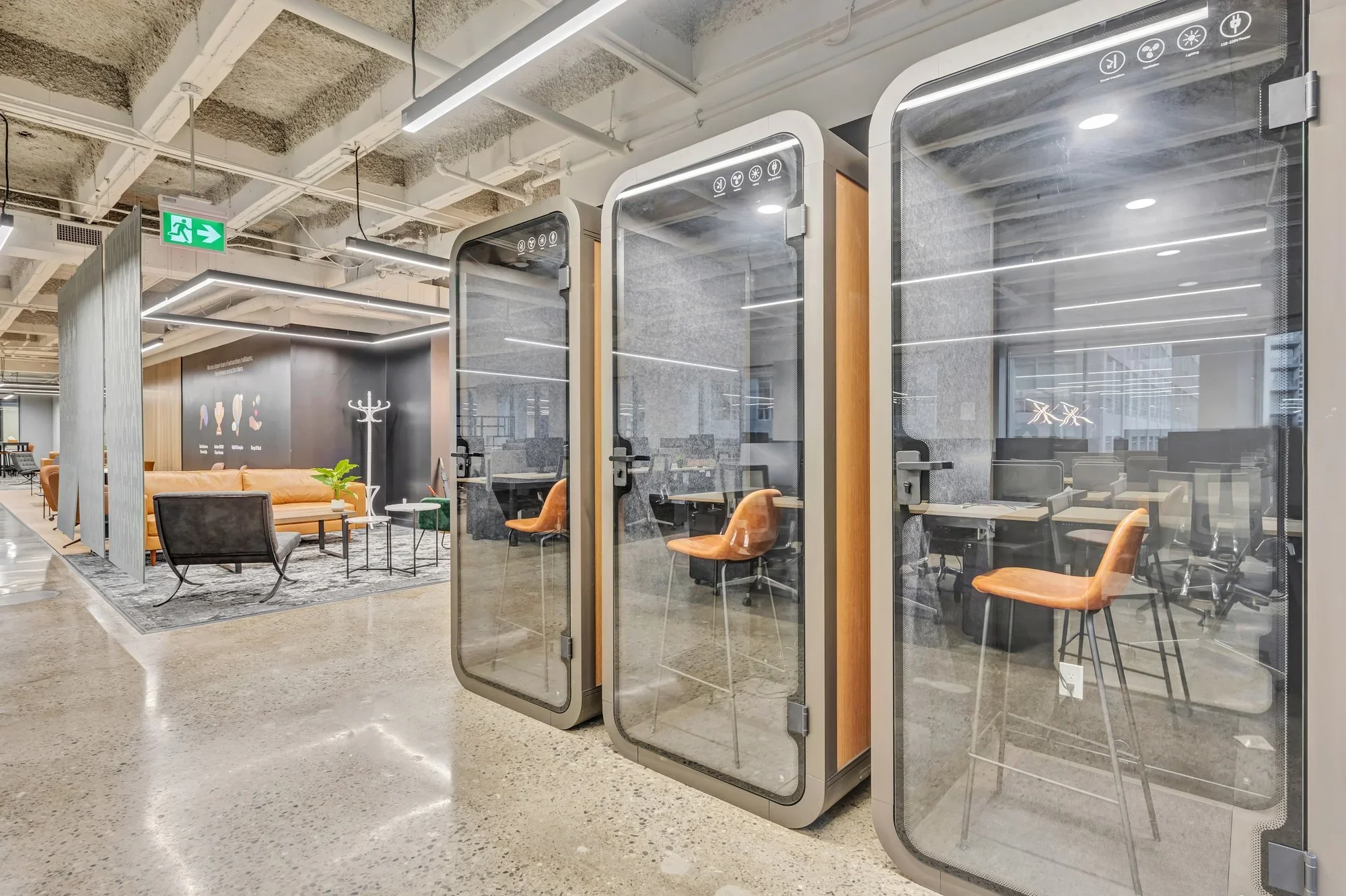The Race Back to the Office
After years of uncertainty, Toronto’s office market is finally coming back.
The city has been one of the slowest to return to pre-pandemic levels of workplace activity. However, we’re now seeing more occupancy, leasing momentum, and corporate confidence. But this comeback comes with urgency: the window for securing high-quality, flexible office space is closing fast.
Momentum Is Building: Toronto’s RTO Rates Are Rising
Toronto’s return-to-office story is changing fast. According to Cushman & Wakefield’s Q1 2025 MarketBeat report, the average weekly office occupancy in downtown Toronto has climbed to about 78% of pre-pandemic levels. The highest since early 2020.
This change is visible in how people are using office space. A survey by Crown Realty Partners found that 80% of tenants across the GTA report regular office attendance on peak days.
The trend suggests that hybrid work is evolving with most employees now following predictable in-office rhythms.
But Toronto Remains a Global Outlier
Even as activity grows, Toronto still falls behind its global peers, some of which have exceeded pre-pandemic levels. A University of Toronto School of Cities study shows that downtown office occupancy is now only 71% of 2019 levels at its midweek peak, in comparison with cities like New York, London, and Paris.
The persistence of high vacancy levels tells a similar story. The Logic reports that downtown Toronto’s vacancy rate is around 15%, compared to just 2.5% before the pandemic. CBRE’s 2025 market outlook echoes this uneven picture, describing Toronto as a market still finding its footing.
In other words, the city is stabilizing but still searching for equilibrium between space supply and evolving work patterns.
Vacancy Is Tightening Across All Classes
Despite the lag, the market’s fundamentals are strengthening fast. It’s a tale of two stories, marked by a consistent flight to quality. CBRE’s 2025 outlook highlights that AAA vacancy now sits around 7.2%, while Class A buildings hover near 15.6%, and B-class space is beginning to absorb as tenants look for value and location flexibility.
Colliers’ Q2 2025 report notes overall vacancy has stabilized at 12.8%, driven by a surge in larger leases and positive net absorption. Meanwhile, Cushman & Wakefield recorded a drop of more than 347,000 square feet of sublet vacancy in a single quarter, the sharpest decline in five years.
Together, these metrics tell a clear story: tenants are committing. The sharp drop in sublet space points to renewed confidence in long-term occupancy, while steady absorption across B-class assets reflects a market recalibrating around flexibility and value. High-quality, move-in-ready space is now in short supply, particularly in premium towers where demand has outpaced new construction.
Major Players Are Flooding Back
The clearest sign of recovery comes from the biggest names in Canadian business. In spring 2025, RBC announced a four-day-per-week in-office requirement for employees, followed shortly by BMO with a similar policy.
These mandates mark a clear shift in tone. A survey by SRRA Research found that 83% of Canadian CEOs expect their staff to be fully back in the office within the next three years.
That shift in tone from leadership circles signals a cultural reset, office presence is being reframed not as a mandate, but as a driver of collaboration and brand cohesion.
Major occupiers, particularly in banking, telecom, and government are once again scoping significant requirements, some exceeding 800,000 square feet. This renewed activity is expected to add pressure to downtown inventory and accelerate tightening across the core.
Sublease Space Is Shrinking, and Tenant Incentives Are Fading
The flood of sublease listings that once defined the post-pandemic market is finally drying up. Cushman & Wakefield reports that sublease availability is now at its lowest level since 2020, reflecting renewed confidence from landlords and tenants. Newmark’s Q4 2024 analysis confirms that sublease vacancy in Class A and B buildings has stabilized at roughly 2.8%, a huge improvement from pandemic-era highs.
That confidence is being matched by major occupiers making long-term commitments. One recent example is Canadian Tire’s 20-year lease at the redeveloped Canada Square complex, where the company will occupy more than 80 percent of 680,000 square feet of new office space. The deal signals points to a new appetite among large corporations to secure centrally located workspace.
At the same time, tenant incentives are evaporating. Newmark’s 1Q 2024 report notes that companies are targeting pre-built or move-in-ready spaces to avoid expensive build-outs, as tenant improvement allowances and free-rent periods tighten.
For occupiers eyeing 2026 or later move-ins, waiting could be expensive. The pricing power tenants had over the past few years is evaporating fast as the market tilts back toward landlords.
The Bottom Line
Toronto’s office market is changing. The landscape is becoming a competitive environment where premium space moves quickly and leverage is shifting back toward landlords.
For companies planning a new lease or renewal, the next year represents a critical window. Acting now, before tightening vacancy and reduced incentives reshape the landscape, could make the difference between locking in strategic value and facing a market that’s already moved on.
Toronto’s office recovery may be uneven, but it’s real, and the companies moving early will define what the next phase of downtown looks like.



